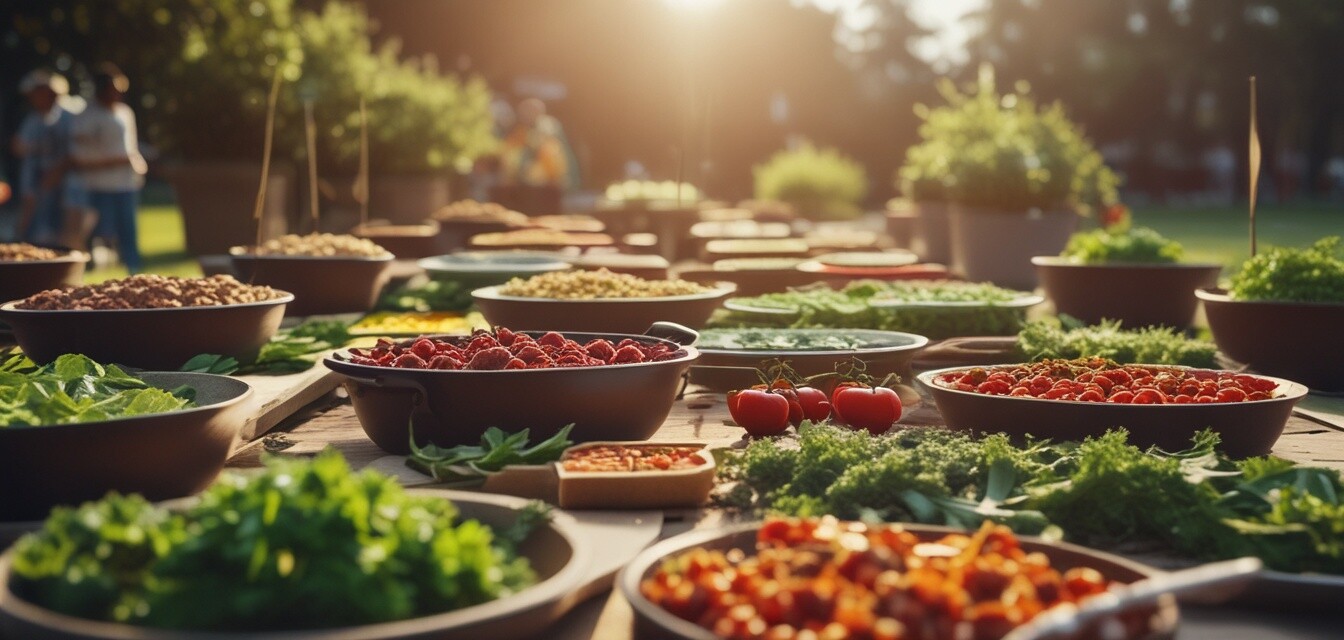
Disclosure: The FTC requires that this article indicate that it was created using AI and is not based on personal experience. It includes affiliate links, which means we may earn a commission if you purchase through these links at no extra cost to you. As Amazon Associates, we earn from qualifying purchases. Product recommendations and endorsements were generated by AI and do not reflect personal opinions or real-world use.
Sustainable Cooking Practices for Large Group Events
Key Takeaways
- Sustainable cooking minimizes waste and energy consumption.
- Eco-friendly cooking products enhance efficiency and responsibility.
- Emphasizing local ingredients can improve flavor and sustainability.
- Innovative cooking techniques can reduce the carbon footprint of cooking for large groups.
- Educating attendees on sustainability adds value to the cooking experience.
In today's world, the need for sustainable practices has never been more crucial, especially when it comes to cooking for large groups. As we gather to celebrate occasions or host events, the way we cook can greatly impact our environment. This article explores current trends in sustainable cooking, including eco-friendly products that make group cooking both effective and green. By adopting these practices, you not only contribute to a healthier planet but also enhance the experience for everyone involved.
Understanding Sustainable Cooking
Sustainable cooking is about creating meals in a way that is environmentally friendly. It emphasizes minimizing waste, using eco-friendly products, and choosing ingredients that contribute positively to the ecosystem. This approach can have different applications depending on the group size, equipment, and individual preferences.
Why Go Green in Cooking for Groups?
- **Environmental Impact:** Reducing our carbon footprint is essential for preserving the planet.
- **Health Benefits:** Sustainable ingredients often come from healthier, organic sources.
- **Cost-Effectiveness:** While some eco-friendly products may have a higher upfront cost, they save money in the long run through efficiency.
- **Community Support:** Sourcing locally supports local farmers and businesses.
Trending Sustainable Cooking Practices
Eco-Friendly Tools and Equipment
Innovations in kitchen tools have made it easier to cook sustainably. Consider the following types of products that align with eco-friendly principles:
| Type of Product | Benefits | Examples |
|---|---|---|
| Reusable Cookware | Reduces waste from disposable items. | Stainless steel pots and pans |
| Biodegradable Utensils | Environmentally friendly alternatives to plastic. | Compostable plates and forks |
| Energy Efficient Appliances | Lower energy consumption and costs. | Induction cooktops, energy-efficient ovens |
| Local and Organic Ingredients | Supports local economies and reduces transportation emissions. | Farmers’ market produce |
Innovative Cooking Methods
Modern cooking methods can significantly reduce the environmental impact associated with large group events:
- Batch Cooking: Cooking in large quantities at once saves energy and time.
- Slow Cooking: Utilizes less power over an extended period, making it energy efficient.
- Grilling and Outdoor Cooking: Uses fewer energy resources when compared to indoor cooking and can utilize natural gas.
Local Sourcing and Seasonal Ingredients
One of the biggest trends in sustainable cooking is the emphasis on local sourcing and using seasonal ingredients. Here’s why this matters:
- Taste Enhancement: Fresh, seasonal produce often tastes better and is more nutritious.
- Waste Reduction: Seasonal ingredients reduce transport emissions and packaging waste.
- Support Local Economy: Purchasing from local suppliers helps keep money within the community.
For more tips on sourcing local ingredients, check out our Buying Guides.
Creating a Sustainable Menu
When preparing a menu for large groups, consider the following sustainable practices:
- Plan Your Menu: Reduce food waste by preparing only what you need.
- Emphasize Plant-Based Dishes: Incorporating more vegetarian and vegan options is often better for the environment.
- Use Leftovers Creatively: Think about how to repurpose leftover ingredients into other meals.
Educating Guests on Sustainability
Adding an educational component to your events can enhance the overall experience. Here are some ideas:
- Host workshops on sustainable cooking techniques.
- Provide information on the sources of your ingredients.
- Encourage guests to share what they’ve learned about sustainability in cooking.
Conclusion
Sustainable cooking practices are not just a passing trend; they are becoming essential as we navigate the complexities of food and environmental issues. By opting for eco-friendly products and methods, we can make a significant impact while cooking for large groups. Incorporating these principles into your cooking not only benefits the planet but also creates a memorable experience for your guests. Embrace sustainability, and let’s make cooking for groups a delightful and eco-friendly endeavor!
Pros
- Reduces waste and energy usage.
- Enhances community engagement through local sourcing.
- Supports healthier eating habits with fresh ingredients.
Cons
- Initial costs for eco-friendly products may be high.
- Requires planning and coordination to implement effectively.
- Availability of local ingredients can vary by region.
For more about sustainable cooking tools, visit our Commercial Grade Cooking Products page.